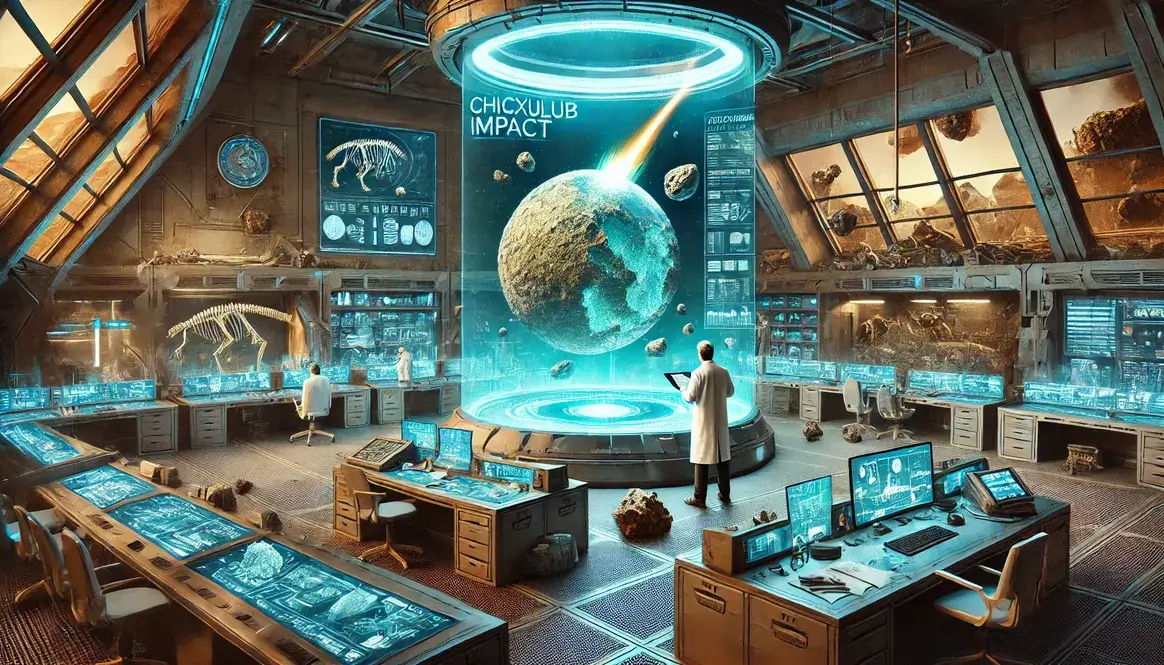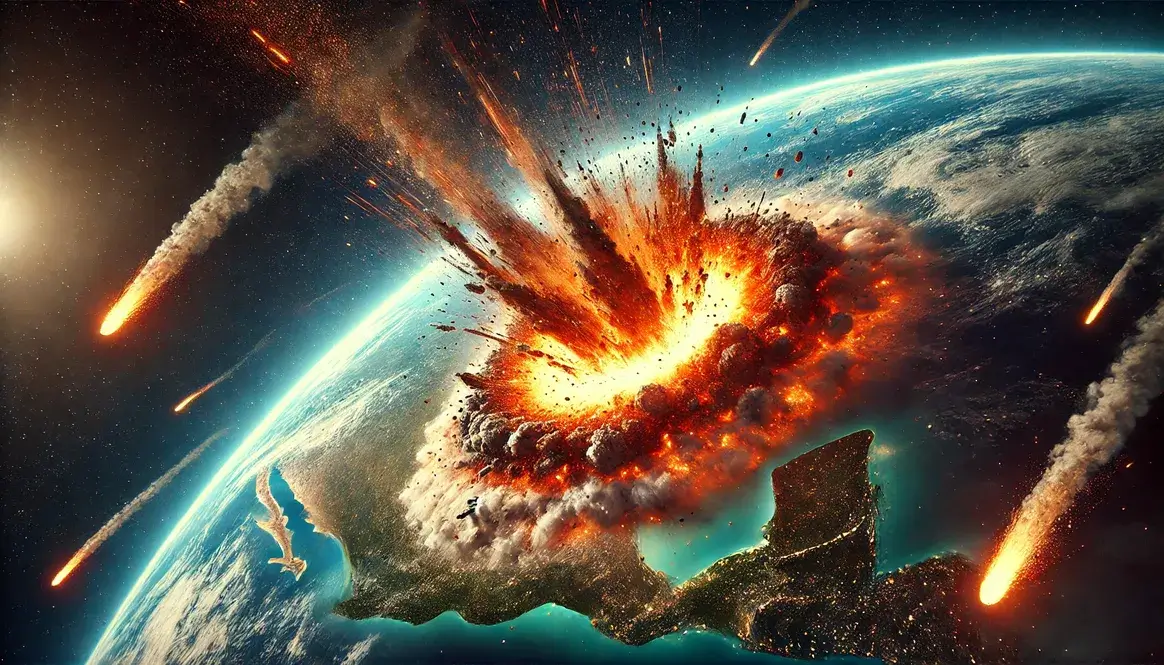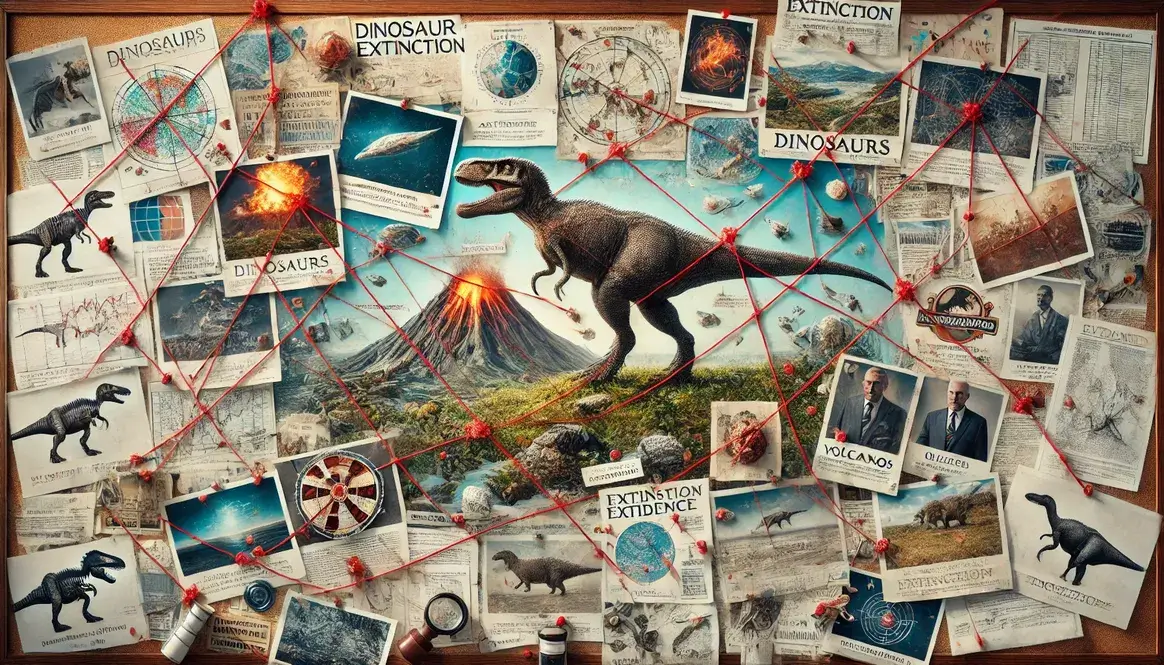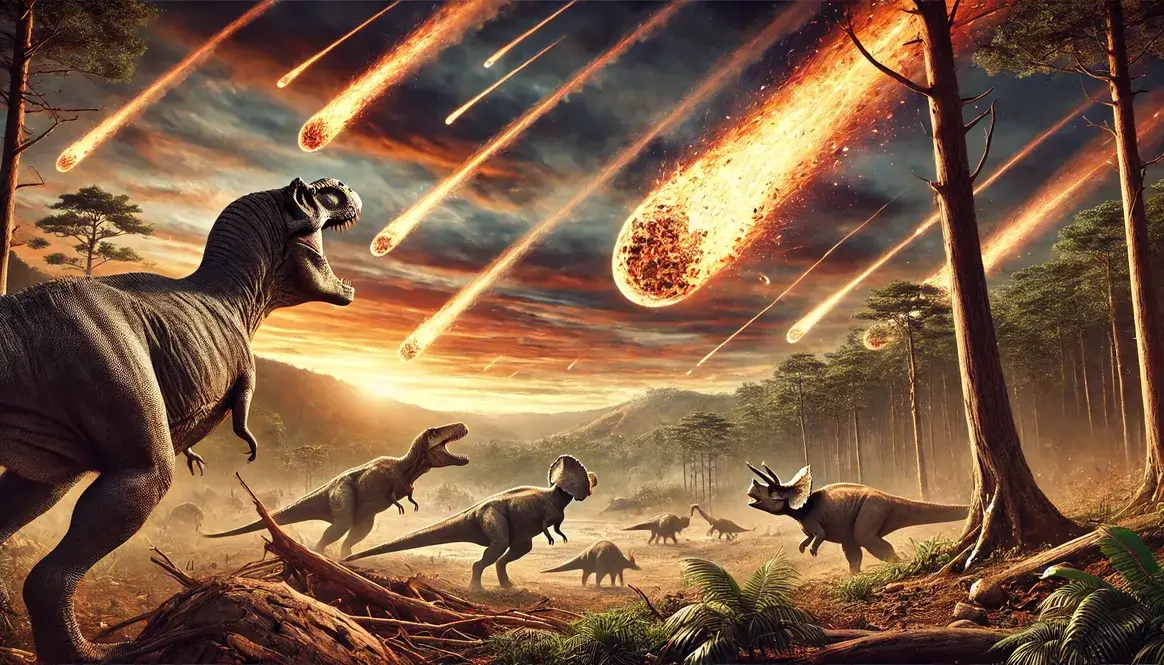Imagine being able to travel back in time to witness the massive asteroid crash that led to the dinosaurs’ extinction. While we can’t actually do that, scientists have found a way to recreate this world-changing event using powerful computers. These digital recreations, called simulations of Chicxulub impact, help us understand what happened when a giant space rock slammed into Earth about 66 million years ago.
| Key Takeaways: Chicxulub Impact Simulations |
|---|
| 1. Virtual models recreate the asteroid collision |
| 2. Simulations reveal immediate and long-term effects |
| 3. Computer power limits model complexity |
| 4. Results help explain dinosaur extinction |
| 5. Ongoing research improves simulation accuracy |
Recreating the Asteroid Collision
Computer simulations are like super advanced video games that scientists use to study things that happened long ago or are too big or dangerous to experiment with in real life. For the Chicxulub impact, these simulations are crucial because they let researchers see how the collision might have played out and what effects it had on the planet.
By using these digital models, scientists can test different scenarios and see how changes in things like the asteroid’s size, speed, or angle of impact might have affected the outcome. It’s like having a time machine and a giant laboratory all rolled into one!
These simulations don’t just show us what happened at the moment of impact. They can also model how the collision changed Earth’s climate, affected plant and animal life, and ultimately led to the extinction of non-avian dinosaurs. It’s a bit like putting together a giant puzzle, with each piece helping us understand more about this incredible event from Earth’s past.
Simulations of Chicxulub impact: Virtual Time Travel
Simulations of Chicxulub impact are like digital time machines that let scientists peek into the past. These computer programs use complex math and physics to recreate the moment when a massive asteroid crashed into Earth, changing life on our planet forever.
Creating Digital Dinosaur Worlds
To build these virtual models, scientists start by recreating Earth as it was 66 million years ago. This involves:
- Mapping ancient continents and oceans
- Recreating the atmosphere and climate
- Populating the model with plants and animals of the time
Scientists use information from rocks, fossils, and other geological clues to make these digital worlds as accurate as possible. It’s like putting together a giant jigsaw puzzle of the past!
Coding the Cosmic Collision
Once the ancient Earth is set up, researchers program the asteroid impact into the simulation. This part is tricky because they need to consider many factors:
- The asteroid’s size and composition
- Its speed and angle of approach
- The location of the Chicxulub crater
By tweaking these variables, scientists can see how different scenarios might have played out. For example, they can test what would happen if the asteroid hit at a steeper angle or if it was larger or smaller.
The simulations also include the aftermath of the impact, showing how the powerful Chicxulub collision affected Earth’s climate and ecosystems. This helps scientists understand the chain of events that led to the extinction of many species, including most dinosaurs.
These virtual models are constantly being improved as we learn more about the impact and its effects. Each new discovery helps make the simulations more accurate, giving us a clearer picture of this pivotal moment in Earth’s history.
What We’ve Learned from Impact Simulations
Simulations of Chicxulub impact have given scientists a wealth of information about what happened when the asteroid struck Earth. These virtual experiments have helped us piece together the story of that fateful day and its aftermath.
The Immediate Aftermath
In the minutes and hours after the impact, simulations show a series of catastrophic events:
- Massive Shockwave: The impact created a shockwave that traveled around the Earth.
- Ejected Material: Rocks and debris were thrown high into the atmosphere and even into space.
- Intense Heat: The area around the impact site experienced extreme temperatures.
- Earthquakes: Powerful tremors shook the Earth’s crust globally.
- Tsunamis: Giant waves swept across oceans, causing widespread flooding.
These simulations help us visualize the immediate chaos that followed the impact, painting a vivid picture of Earth’s worst day.
Long-Term Effects
Over months and years, the simulations reveal how the impact changed our planet:
The dust and gases thrown into the atmosphere blocked sunlight, leading to a period of global cooling. This “impact winter” lasted for years, dramatically altering Earth’s climate. Plants struggled to grow in the darkness, affecting the entire food chain.
Simulations also show how wildfires spread globally, sparked by the heat of falling debris. These fires released more smoke and gases into the atmosphere, worsening the environmental crisis.
| Time After Impact | Global Effects |
|---|---|
| Days to Weeks | Darkness, acid rain, global wildfires |
| Months to Years | Prolonged winter, plant die-offs |
| Years to Decades | Gradual warming, ecosystem collapse |
Extinction Scenarios
By modeling these long-term effects, scientists can better understand why so many species, including non-avian dinosaurs, went extinct. The simulations suggest it wasn’t just one factor, but a combination of:
- Lack of food due to plant die-offs
- Extreme temperature changes
- Toxic gases in the atmosphere
- Acidification of oceans
These models help explain why some animals survived while others didn’t. For example, animals that could burrow underground or live in water had better chances of surviving the initial impact and its aftermath.
Through these simulations, we’re getting a clearer picture of how a single event could have such far-reaching consequences, leading to one of the largest mass extinctions in Earth’s history.
Challenges in Modeling Ancient Events
Creating accurate simulations of the Chicxulub impact is no easy task. Scientists face several hurdles when trying to model events that happened millions of years ago. Let’s explore some of these challenges.
Gaps in Our Knowledge
One of the biggest obstacles in creating precise simulations is the incomplete information we have about the impact and the Earth at that time. Here are some key areas where our knowledge is limited:
- Exact Asteroid Composition: We’re not entirely sure what the asteroid was made of, which affects how it interacted with Earth’s atmosphere and surface.
- Pre-impact Environment: Our understanding of Earth’s climate and ecosystems 66 million years ago is still developing.
- Impact Angle: The exact angle at which the asteroid hit Earth is still debated, and this can significantly change the simulation results.
- Earth’s Interior Structure: Our knowledge of the planet’s internal composition at the time of impact is limited.
These gaps in our knowledge mean that scientists often have to make educated guesses or use ranges of possible values in their simulations. This can lead to varying results and interpretations.
Computer Power Limits
Even with today’s advanced technology, simulating an event as complex as the Chicxulub asteroid collision pushes our computers to their limits. Here’s why:
- Massive Scale: The impact affected the entire planet, from the core to the upper atmosphere. Modeling all these layers in detail requires enormous computational power.
- Time Span: Simulations need to cover both the immediate impact (seconds to hours) and long-term effects (years to centuries), which is computationally intensive.
- Multiple Physics: These models must account for various physical processes like heat transfer, fluid dynamics, and chemical reactions, all happening simultaneously.
As a result, scientists often need to simplify their models or focus on specific aspects of the impact rather than simulating everything at once. It’s like trying to draw a detailed picture of an entire city – sometimes you have to zoom in on certain neighborhoods to get all the details right.
Despite these challenges, each new simulation brings us closer to understanding what really happened when the asteroid struck. As our knowledge grows and computers become more powerful, we can expect even more accurate and detailed simulations in the future.
Improving Our Understanding
Simulations of Chicxulub impact have dramatically changed our view of the event that led to the dinosaurs’ extinction. These digital models have helped scientists piece together a more complete picture of what happened 66 million years ago.
Comparing Simulations to Evidence
Scientists don’t just run simulations and call it a day. They constantly check their results against real-world evidence. This process is crucial for ensuring the accuracy of their models. Here’s how they do it:
- Geological Clues: They compare simulation results with rock layers formed during the impact.
- Fossil Evidence: The types and distribution of fossils found are matched against predicted extinction patterns.
- Chemical Signatures: Simulated atmospheric changes are checked against chemical traces in rocks.
- Impact Crater Studies: The Chicxulub crater’s structure is compared with simulation predictions.
By aligning simulations with physical evidence, scientists can refine their models and improve our understanding of the impact event.
Refining Our Models
As new discoveries are made, scientists update their simulations to reflect the latest knowledge. This ongoing process helps create more accurate models over time. For example:
- When new fossils are found, they can adjust the pre-impact ecosystem in their simulations.
- If new data about the asteroid’s composition comes to light, they can update the impact parameters.
- Advances in our understanding of Earth’s ancient climate allow for more precise atmospheric modeling.
This constant refinement means that our understanding of the Chicxulub impact is always evolving, getting clearer and more detailed with each new study.
The Future of Chicxulub Simulations
The future of Chicxulub impact simulations looks exciting! As technology improves, we can expect even more detailed and accurate models. Here are some ways future simulations might advance:
- Increased Computing Power: Faster computers will allow for more complex simulations that can model more factors simultaneously.
- Artificial Intelligence: AI could help identify patterns in data that humans might miss, leading to new insights.
- Virtual Reality: VR technology might allow scientists (and the public) to “experience” the impact in immersive 3D environments.
- Interdisciplinary Approach: Combining simulations with data from various fields like paleontology, geology, and climate science could provide a more holistic understanding of the event.
These advancements could help resolve ongoing debates about dinosaur extinction and provide new insights into how life on Earth responds to catastrophic events.
As our tools for studying the past improve, who knows what new secrets we might uncover about the day that changed Earth’s history forever? The Chicxulub impact simulations of the future might just rewrite our understanding of this pivotal moment in our planet’s past.









